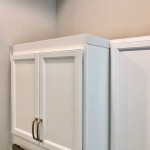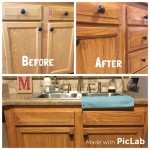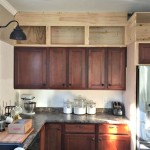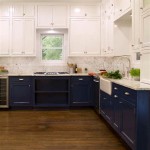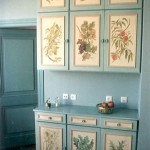Essential Considerations for Choosing Kitchen Cabinets
Kitchen cabinets are more than just storage spaces; they play a crucial role in the functionality and aesthetics of your kitchen. With so many options available in the market, selecting the perfect cabinets can be an overwhelming task. To help you make an informed decision, we've compiled a guide outlining the essential aspects to consider when choosing kitchen cabinets.
1. Material
The material of your kitchen cabinets will determine their durability, style, and cost. Common materials include:
- Wood: Wood cabinets are timeless and versatile, available in a wide range of finishes and styles. Solid wood cabinets offer the best quality, but they come with a higher price tag. Wood veneers provide a more affordable alternative while still offering a natural wood look.
- Laminate: Laminate cabinets are made from particle board or medium-density fiberboard covered with a decorative laminate. They are budget-friendly, easy to clean, and come in various colors and patterns.
- Metal: Metal cabinets, typically made of stainless steel or aluminum, are durable and easy to clean. They offer a modern and industrial look, but they can be more expensive than other materials.
- Thermofoil: Thermofoil cabinets are made from medium-density fiberboard covered with a vinyl film. They are affordable, durable, and resistant to moisture and stains.
2. Style
When selecting the style of your kitchen cabinets, consider the overall design and theme of your kitchen. Popular cabinet styles include:
- Traditional: Traditional cabinets feature detailed carvings, moldings, and ornate hardware. They are perfect for kitchens with a classic or formal style.
- Contemporary: Contemporary cabinets have clean lines, simple designs, and minimal hardware. They are well-suited for modern and minimalist kitchens.
- Transitional: Transitional cabinets blend traditional and contemporary elements, offering a timeless look that can complement a variety of kitchen styles.
- Rustic: Rustic cabinets are made from natural wood with a distressed or unfinished appearance. They are ideal for kitchens with a warm and cozy feel.
3. Size and Configuration
Before selecting your kitchen cabinets, carefully measure the space available. Consider the following factors when determining the size and configuration of your cabinets:
- Overall layout: Think about the placement of appliances, countertops, and other fixtures to ensure that your cabinets fit seamlessly into the kitchen layout.
- Storage needs: Assess your storage requirements, including dishes, cookware, utensils, and pantry items. Make sure you have enough cabinets to accommodate all your storage needs.
- Cabinet height and width: Standard cabinet heights range from 30 to 42 inches, while widths vary from 12 to 36 inches. Choose cabinet dimensions that suit your kitchen's proportions and allow for easy access.
- Cabinet depth: Kitchen cabinets typically have a depth of 24 inches, but you can opt for deeper cabinets for more storage space or shallower cabinets to create a more spacious feel.
4. Functionality
In addition to aesthetics, consider the functionality of your kitchen cabinets:
- Drawer vs. door cabinets: Drawer cabinets provide easy access to contents, while door cabinets offer more storage space. Choose a combination of both to meet your specific needs.
- Cabinet hardware: Cabinet hardware, such as knobs and handles, can improve the functionality and style of your cabinets. Opt for hardware that is easy to grip and complements the overall design of your kitchen.
- Soft-close doors and drawers: Soft-close doors and drawers prevent slamming and reduce noise, creating a more peaceful and sophisticated kitchen environment.
- Organizational features: Look for cabinets with built-in organizers, such as pull-out shelves, lazy Susans, and spice racks, to maximize storage space and keep your kitchen organized.
Conclusion
Choosing the right kitchen cabinets is an important decision that can greatly impact the functionality and appearance of your kitchen. By considering factors such as material, style, size, configuration, and functionality, you can select cabinets that perfectly complement your kitchen's design and meet your storage needs. Whether you prefer the classic charm of traditional cabinets, the sleek lines of contemporary cabinets, or the rustic warmth of natural wood, there are endless options available to create a kitchen that is both beautiful and functional.

Kitchen Cabinet Parts Terminology Granite Quartz Countertops Cabinets Factory

Kitchen Cabinet Parts Terminology Granite Quartz Countertops Cabinets Factory

Kitchen Definitions The Classics

Kitchen Cabinets And Components That Make Cooking A Dream

Types Of Kitchen Cabinets 101 Guide For Homeowners

8 Diffe Types Of Kitchen Cabinets You Ll Love

Kitchen Cabinet Parts Names Google Search Plans Cabinets Design

8 Diffe Types Of Kitchen Cabinets You Ll Love

Kitchen Cabinet Parts Terminology Granite Quartz Countertops Cabinets Factory

Parts Of A Cabinet With Diagrams The Handyman S Daughter
Related Posts

